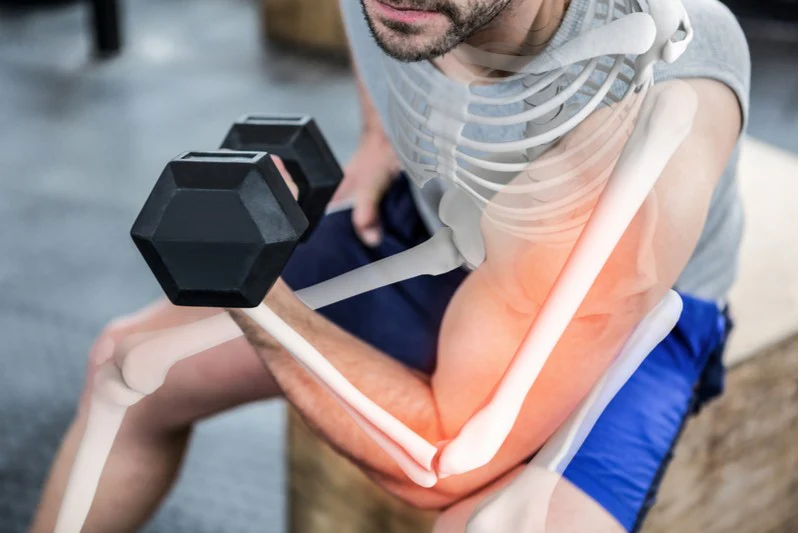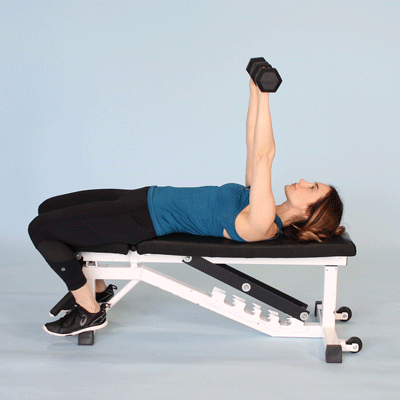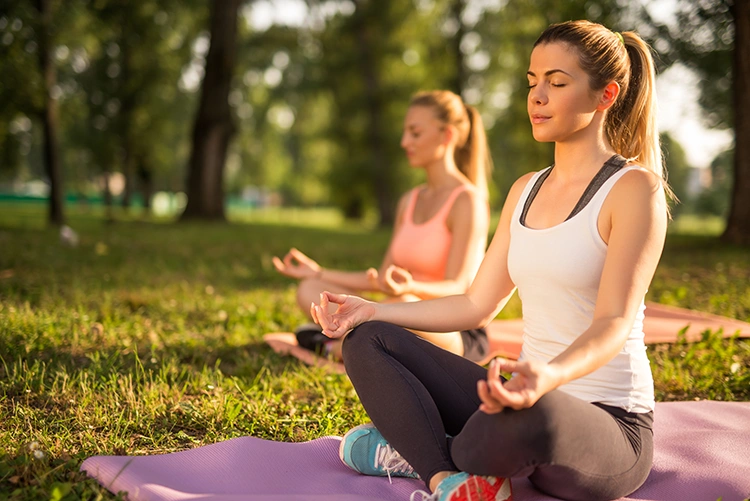Physical Health Benefits Of Physical Activity is often seen as a way to stay fit, lose weight, or improve appearance, but its benefits go far beyond aesthetics. Regular exercise is one of the most effective ways to maintain and enhance overall physical health. Whether it’s jogging, swimming, cycling, or simple daily activities like walking, physical activity plays a pivotal role in improving cardiovascular health, strengthening muscles, boosting mental well-being, and preventing chronic diseases.
In this article, we will explore the comprehensive physical health benefits of physical activity, looking at the science behind it and its positive effects on different body systems. By the end, you’ll have a deeper understanding of how regular exercise can help you live a longer, healthier life.
Key Takeaways
- Regular physical activity has profound effects on cardiovascular, muscular, and bone health.
- Exercise is critical for weight management, immune function, and mental health.
- A balanced exercise routine that includes aerobic, strength, and flexibility exercises is key to maintaining overall physical health.
- Even moderate physical activity, such as walking or cycling, can yield significant health benefits.
Why Is Physical Activity Important for Physical Health?
Before diving into specific benefits, it’s important to understand why physical activity is so crucial for our health. Our bodies are designed to move; physical activity is essential for maintaining the normal functioning of various systems within the body. Without regular movement, muscles weaken, bones become brittle, and organs become less efficient, leading to an increased risk of diseases and reduced quality of life.
On a cellular level, physical activity promotes the circulation of oxygen, helps regulate blood sugar levels, and encourages the production of hormones that protect our bodies against diseases. Moreover, exercise can stimulate the release of endorphins, which are natural mood enhancers, thereby supporting mental health and overall well-being.
Let’s break down the specific physical health benefits of exercise and how they contribute to maintaining a healthier life.
How Does Physical Activity Improve Cardiovascular Health?
| Aspect | Description | Example |
|---|---|---|
| Improved Heart Efficiency | Regular physical activity strengthens the heart muscle, enabling it to pump blood more effectively. | Endurance exercises like running or cycling help the heart pump more blood with each beat, reducing the heart rate at rest. |
| Lower Blood Pressure | Exercise helps reduce blood pressure by improving blood vessel flexibility and promoting better circulation. | Regular aerobic exercise, such as walking, swimming, or cycling, can lower systolic and diastolic blood pressure levels. |
| Increased Blood Flow | Physical activity improves circulation and ensures that blood, oxygen, and nutrients are delivered more efficiently throughout the body. | Activities like brisk walking or jogging increase blood flow, allowing the heart to function more efficiently. |
| Reduced Cholesterol Levels | Exercise helps increase HDL (good cholesterol) and decrease LDL (bad cholesterol), reducing the risk of plaque buildup in the arteries. | Aerobic exercises such as swimming or cycling raise HDL cholesterol and lower triglycerides and LDL cholesterol. |
| Improved Blood Sugar Regulation | Physical activity enhances insulin sensitivity and helps regulate blood sugar levels, reducing the risk of diabetes, a key risk factor for cardiovascular disease. | Walking or light jogging after meals helps stabilize blood sugar levels and prevents spikes. |
| Weight Management | Regular exercise helps control weight by burning calories and improving metabolic rate, reducing the strain on the heart. | Consistent physical activity, such as weight training or aerobic exercise, helps in maintaining a healthy weight, lowering heart disease risk. |
| Reduced Inflammation | Physical activity helps lower inflammation in the body, which can reduce the risk of heart disease and improve arterial health. | Moderate exercises like yoga, swimming, or walking reduce inflammation markers in the body, lowering cardiovascular risk. |
| Improved Vascular Health | Regular exercise enhances the health and flexibility of blood vessels, reducing the risk of atherosclerosis (narrowing of the arteries). | Cardiovascular exercises such as running and cycling promote healthy blood vessel function and reduce artery stiffness. |
| Increased Heart Rate Variability | Physical activity improves heart rate variability, which is an indicator of heart health and resilience to stress. | Regular aerobic exercises like jogging or cycling can increase heart rate variability, promoting better cardiovascular health. |
Reducing the Risk of Heart Disease
Physical Health Benefits Of Physical Activity One of the most well-known benefits of physical activity is its impact on heart health. Regular exercise strengthens the heart, improves circulation, and helps reduce blood pressure, all of which reduce the risk of cardiovascular diseases, including heart disease and stroke.
Engaging in aerobic exercises, such as running, swimming, or cycling, helps the heart pump blood more efficiently. This leads to improved oxygen delivery to vital organs and tissues. Over time, the heart becomes stronger, and resting heart rate lowers, reducing the workload on the heart and lowering the risk of developing conditions like hypertension, coronary artery disease, and heart attacks.
Lowering Cholesterol Levels
Physical activity also plays a crucial role in regulating cholesterol levels. Regular exercise helps raise HDL (high-density lipoprotein), commonly known as “good cholesterol,” while lowering LDL (low-density lipoprotein) or “bad cholesterol.” This is important because a high level of LDL cholesterol can lead to plaque buildup in the arteries, increasing the risk of heart disease.
Improving Blood Circulation
Increased physical activity improves blood flow and the functioning of blood vessels. Regular exercise helps maintain the health and flexibility of blood vessels, preventing them from stiffening and reducing the likelihood of blockages. Better blood circulation also improves the delivery of nutrients and oxygen to tissues, promoting faster recovery from physical exertion and improving overall health.
How Does Exercise Strengthen Muscles and Bones?

Exercise plays a pivotal role in strengthening muscles and bones, promoting overall health, and preventing age-related declines in strength and mobility. Different types of exercise stimulate the body in ways that enhance muscle function and bone density, contributing to better physical health.
How Exercise Strengthens Muscles
Muscle strength is critical for overall body function, mobility, and physical performance. Regular exercise stimulates muscles to grow, recover, and improve performance. Here’s how exercise strengthens muscles:
- Muscle Fiber Activation: When you engage in strength training exercises, such as weightlifting or resistance exercises, your muscles experience small amounts of damage (micro-tears). The body repairs these muscle fibers by fusing them together, which makes them stronger and larger over time.
- Example: Lifting weights or performing resistance exercises like squats, push-ups, or lunges activates the muscle fibers, promoting muscle growth and strength.
- Increased Muscle Protein Synthesis: Exercise, particularly strength training, stimulates muscle protein synthesis—the process by which the body builds new muscle proteins to repair and grow muscles. This leads to increased muscle mass and strength.
- Example: Consuming protein-rich foods (like chicken, beans, or whey protein) after exercise supports muscle recovery and growth.
- Neuromuscular Adaptations: With regular strength training, the nervous system becomes more efficient at recruiting motor units (groups of muscle fibers controlled by a single motor neuron) to work together. This leads to better coordination and strength over time.
- Example: Activities like weightlifting or bodyweight exercises (such as planks or push-ups) improve neuromuscular coordination, resulting in better muscle performance.
- Enhanced Muscle Endurance: Aerobic exercises, like running, cycling, and swimming, build muscle endurance by improving the ability of muscles to sustain activity over time without fatigue. This improves overall muscle function.
- Example: Engaging in cardio exercises like running, cycling, or swimming for extended periods improves endurance in skeletal muscles, allowing them to perform activities for longer durations without tiring.
How Exercise Strengthens Bones
Exercise is also essential for maintaining and improving bone density, preventing bone-related conditions such as osteoporosis, and supporting the structural integrity of the skeleton. Here’s how exercise strengthens bones:
- Bone Stress and Adaptation: Weight-bearing exercises (activities where your body supports its own weight) apply mechanical stress to bones, stimulating bone-forming cells (osteoblasts) to increase bone density. This makes bones stronger and more resistant to fractures.
- Example: Walking, jogging, hiking, and climbing stairs are weight-bearing exercises that apply stress to the bones, enhancing bone density and strength over time.
- Resistance Training and Bone Density: Strength training exercises, such as lifting weights or using resistance bands, provide mechanical load to bones, which helps increase bone mass. This is particularly beneficial for maintaining bone health in older adults.
- Example: Lifting weights or performing bodyweight exercises like squats, lunges, and push-ups stimulates the bones, promoting the formation of new bone tissue and increasing bone density.
- Increased Collagen Production: Physical activity promotes the production of collagen in the bones and connective tissues, which provides structural support and enhances bone strength. Collagen is an essential protein that makes bones flexible and strong.
- Example: Weight-bearing exercises such as resistance training and activities like dancing or jumping promote collagen production in the bones, improving their strength and flexibility.
- Enhanced Calcium Absorption: Exercise can help improve the body’s ability to absorb calcium, a vital mineral for bone health. Regular weight-bearing and resistance exercises can increase the efficiency of calcium retention in bones, making them denser and stronger.
- Example: Engaging in weight-bearing activities like running or dancing, combined with proper nutrition that includes calcium-rich foods (e.g., dairy products, leafy greens, or fortified plant-based milks), supports optimal bone health.
- Prevention of Bone Loss: Exercise helps counteract bone loss associated with aging, especially for people with osteoporosis or a higher risk of developing bone-related issues. Regular physical activity helps slow down or even reverse some aspects of bone density loss.
- Example: Strength training and weight-bearing exercises can help prevent or slow the progression of osteoporosis, a condition where bones become brittle and fragile.
Muscle Building and Endurance

Exercise, particularly strength training and resistance exercises, plays a vital role in building and maintaining muscle mass. As we age, muscle mass naturally declines, leading to a condition known as sarcopenia. However, regular physical activity, especially weight-bearing exercises, can help prevent or slow down this process.
Building muscle through resistance exercises (such as lifting weights, squats, or push-ups) not only increases strength but also improves endurance, making everyday tasks easier. Strong muscles contribute to better balance, coordination, and mobility, reducing the risk of falls and injuries, especially in older adults.
Bone Health and Osteoporosis Prevention
Physical activity is also crucial for maintaining healthy bones. Weight-bearing exercises such as walking, running, and strength training stimulate bone formation and help maintain bone density. This is particularly important as we age, as our bones become more fragile and prone to fractures.
Regular physical activity can prevent osteoporosis, a condition where bones become weak and brittle. It helps maintain bone mass and improves the bone structure, reducing the likelihood of fractures. Additionally, exercise can enhance flexibility and joint stability, which can protect the bones from injury during physical activities.
How Does Physical Activity Affect Mental Health?
Reducing Stress and Anxiety
Physical activity doesn’t just benefit physical health; it plays a key role in improving mental health as well. Exercise is well-known for its ability to reduce stress and anxiety. When we exercise, our bodies release endorphins, often referred to as “feel-good hormones.” These endorphins help improve mood, reduce pain perception, and create a sense of well-being.
In addition to endorphins, exercise reduces the levels of stress hormones like cortisol. Engaging in regular physical activity allows the body to cope better with stress, improves sleep, and decreases the overall feeling of anxiety. This explains why many people find exercise to be a natural stress reliever after a long day at work or during difficult situations.
Boosting Cognitive Function and Memory
Exercise also has positive effects on brain health. Regular physical activity has been shown to improve cognitive function, memory, and overall brain health. Exercise increases blood flow to the brain, which nourishes neurons and promotes the growth of new brain cells.
Physical activity has also been linked to improved focus, attention, and faster information processing. These benefits are particularly important as we age, as regular exercise helps protect the brain against cognitive decline, Alzheimer’s disease, and other forms of dementia.
Combating Depression
Exercise is an effective treatment for mild to moderate depression. Studies have shown that physical activity can be as effective as antidepressant medications or psychotherapy in treating symptoms of depression. Regular physical activity boosts self-esteem, improves mood, and can create a sense of accomplishment, which is important in overcoming depressive symptoms.
How Does Physical Activity Help with Weight Management?

Burning Calories and Maintaining a Healthy Weight
Maintaining a healthy weight is a fundamental component of physical health, and exercise is a critical factor in weight management. Physical activity helps burn calories, which is essential for weight loss or maintaining a healthy weight. The more intense the activity, the more calories you burn.
Incorporating both aerobic exercises (such as walking, cycling, or swimming) and strength training can accelerate metabolism, increase muscle mass, and improve body composition. Muscle tissue burns more calories at rest than fat tissue, meaning that building muscle through exercise can increase your basal metabolic rate, helping you burn more calories even when you’re not working out.
Preventing Obesity
Physical activity is one of the most effective ways to prevent obesity, a major risk factor for several chronic conditions, including type 2 diabetes, heart disease, and joint problems. Regular physical activity helps regulate insulin sensitivity and blood sugar levels, reducing the risk of metabolic disorders associated with obesity.
How Does Physical Activity Enhance Immune Function?
Strengthening the Immune System
Exercise plays a crucial role in strengthening the immune system and helping the body fight off infections. Moderate, consistent physical activity has been shown to boost the production of white blood cells, which are essential for fighting infections. Exercise also improves circulation, ensuring that immune cells are distributed throughout the body more efficiently.
It’s important to note that while excessive exercise can suppress the immune system and increase susceptibility to illness, regular moderate exercise is optimal for supporting immune health. Physical activity can also reduce inflammation, which is linked to numerous chronic diseases.
Also Read : Exercise Your Mind: The Essential Role Of Physical Health For Mental Clarity
Conclusion
Physical activity offers a wide range of benefits for both the body and the mind. Regular exercise strengthens the cardiovascular system, builds muscle and bone density, improves mental health, aids in weight management, and boosts immune function. Whether you’re looking to prevent chronic diseases, improve your mood, or simply feel better day-to-day, physical activity is essential to living a long, healthy life.
FAQs
What is the minimum amount of physical activity needed for health benefits?
According to the World Health Organization (WHO), adults should engage in at least 150 minutes of moderate-intensity aerobic activity or 75 minutes of vigorous-intensity aerobic activity each week, along with muscle-strengthening activities on two or more days per week.
Can physical activity reduce the risk of chronic diseases?
Yes, regular physical activity significantly reduces the risk of chronic diseases like heart disease, type 2 diabetes, and certain types of cancer by improving overall health and enhancing body functions.
How does exercise affect mental health?
Exercise helps reduce symptoms of depression and anxiety by releasing endorphins, improving sleep, and providing a sense of accomplishment. It also boosts cognitive function and protects against cognitive decline as we age.
Is strength training important for overall health?
Yes, strength training is essential for building muscle, maintaining bone health, and improving overall strength, balance, and coordination. It also plays a role in weight management by increasing muscle mass and metabolic rate.
How does exercise help with weight loss?
Exercise helps burn calories, increase metabolism, and build muscle, all of which contribute to weight loss or maintaining a healthy weight. It also helps regulate blood sugar and insulin sensitivity, further aiding in weight management.
Can exercise improve sleep?
Yes, regular physical activity promotes better sleep by reducing anxiety and stress, which can otherwise interfere with sleep patterns. However, intense exercise close to bedtime may have the opposite effect for some individuals.
What types of exercises are best for overall health?
A combination of aerobic exercises (e.g., walking, jogging, swimming) and strength training (e.g., weightlifting, bodyweight exercises) is best for overall health. Flexibility and balance exercises, such as yoga or Pilates, are also beneficial.




